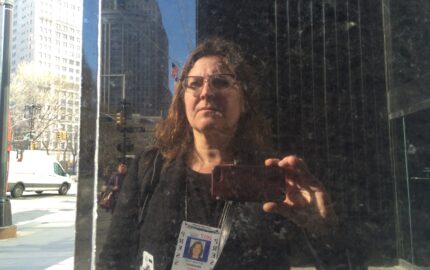The news just never takes a rest, does it? Or maybe it's a variation on the Baader-Meinhof phenomenon, aka frequency bias: Once you've tapped into a certain story, related stories or follow-ups catch your attention. Of course, there's also the interest that comes from an odd sense of familiarity. After the fatal crowd crush at the Travis Scott Astroworld Festival a week ago, a friend posted her memories of being at the Who concert in 1979, when 11 people were killed. Another friend has been gripped by the complicated "Unite the Right" rally trial in Charlottesville, Virginia; she happened to be visiting Charlottesville on that day in August 2017, when a self-proclaimed neo-Nazi plowed his car into group of racial justice demonstrators, killing Heather Heyer, 32, and injuring at least 19 other people. I find myself tuning in more keenly to news from places I've lived or traveled over the decades.
But the news also echoes more loudly when we know the backstory. I guess that's another form of familiarity. A bonus of my work with Storyboard is that I get to peek behind the curtain of countless stories that otherwise would have gone unnoticed. Just this week:
The news never rests. Nor is it stagnant. What we understand in the moment can, and probably should, change as we learn more and as singular events are placed in greater context. I hope Storyboard is a valuable part of that journey.
***
This post was part of the Nieman Storyboard newsletter on Nov. 12, 2021.
But the news also echoes more loudly when we know the backstory. I guess that's another form of familiarity. A bonus of my work with Storyboard is that I get to peek behind the curtain of countless stories that otherwise would have gone unnoticed. Just this week:
- The trial of the three men accused of murdering Ahmaud Arbery, who was chased down and shot to death while out jogging in a suburban neighborhood in South Georgia in February 2020. Arbery, 25, was Black; the accused, who are white, claim they suspected him of casing and robbing homes in the subdivision. As I followed trial news this week, I went back to our annotation of the stunning piece by Mitchell S. Jackson for Runner's World, which wove a profile of Arbery with an essay of the dangers of "running while Black."
- Another trial with special resonance has been that of Kyle Rittenhouse, who is accused of intentional homicide in the fatal shooting of three people, two fatally, during race-charged demonstrations in Kenosha, Wisconsin, last year. I grew up in Wisconsin and attended college in Milwaukee, just a few miles up the Lake Michigan shore from Kenosha; although I haven't lived in Wisconsin for more than 40 years, I still follow political news there as if it's my place. In this case, my interest deepened further because of the annotation we did of the Washington Post narrative that revisited the events of that fateful night.
- And then there was the lengthy essay by Jake Silverstein, editor of The New York Times Magazine, revisiting the magazine's much-debated "1619 Project." That project has been expanded into a podcast and now a book: "The 1619 Project: A New Origin Story." It's possibly the term "origin story" that has some historians decrying the work, in which Nikole Hannah-Jones argued that slavery was embedded in the founding of the United States. Her essay was awarded the 2020 Pulitzer Prize for Commentary. Silverstein's new essay peels apart two years of controversy over the project. I would find it more of a struggle to follow all the folds and turns of the arguments and counterarguments if I hadn't gotten to get an insider's view of the original project through the Storyboard interview with Hannah-Jones, or from our excerpts of her keynote at the 2017 Power of Narrative conference in Romania, in which she declared flat-out: "What drives me is rage." I'm glad I could return to those reference points again as I followed Silverstein's latest volley, in which he plots the evolutions and odd fellowships of journalism and history.
The news never rests. Nor is it stagnant. What we understand in the moment can, and probably should, change as we learn more and as singular events are placed in greater context. I hope Storyboard is a valuable part of that journey.
***
This post was part of the Nieman Storyboard newsletter on Nov. 12, 2021.



